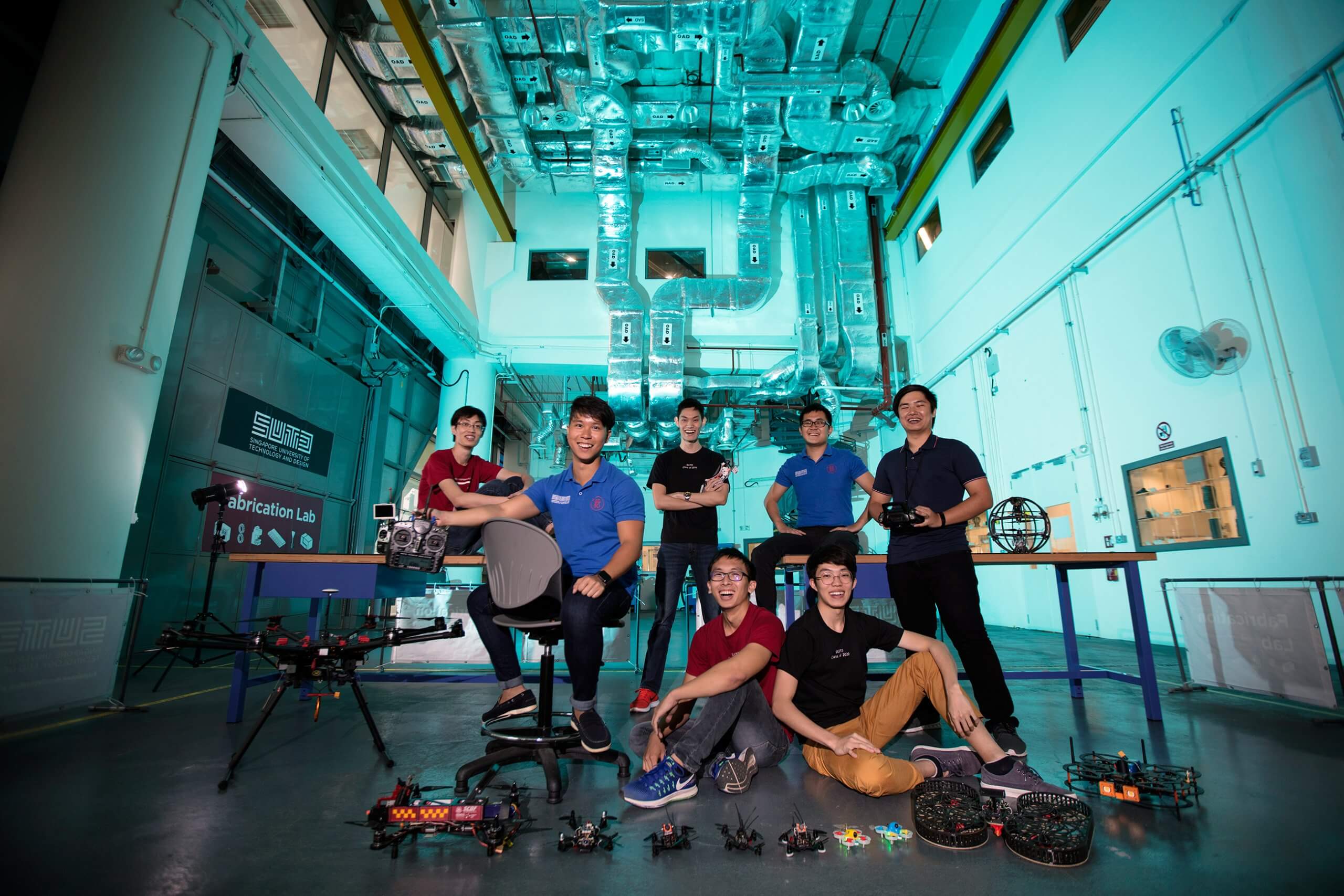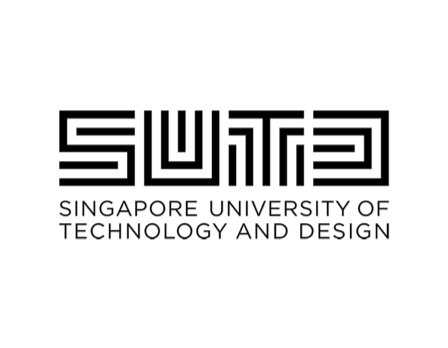Lionell Loh Jian An, a Singapore University of Technology and Design (SUTD) senior is heading to Menlo Park, the global headquarters of Facebook in San Francisco, US. Having landed a sought-after position at the tech conglomerate, he’s excited to get started on eliminating some of the platform’s most notorious side effects — like fake news and hate speech — from user’s feeds.
Does Lionell think SUTD played a role in helping him land this plum gig? Definitely, he says. “My education basically prepared me to jump through the technical hoops. There were also a budding but respectable community of seniors who were eager to help and see me succeed. I owe my success to them and I am determined to pass it forward,” he explains.
SUTD attracts a diverse pool of talent to its campus every year. It’s a hotbed of young, creative energy — ideal for students like Lionell to bounce ideas and potential solutions with their peers. “It is easy to talk about an existing problem with friends and discuss possible solutions for it — and if there is sufficient excitement, a side project is born!”
It is this curious, collaborative spirit that guides students in reinventing engineering, computing, and architecture through their education at SUTD. Lionell adamantly believes that his Information Systems Technology and Design (ISTD) major has the potential to create lasting impact on an increasingly digital world.
With the moral and financial support from his professors and the Entrepreneurship Centre, the Singaporean student has amassed several awards, even participating in mentorship and research programmes throughout his Bachelor of Engineering. He has interned at Apple, went to Japan’s renowned Chiba University to learn from a Healthcare Robotics Lab and has also won several awards at Europe’s largest hackathon, Junction. “These professors believed in me at some point, advised me and rooted for my growth — for that I am very grateful,” he says.
Lionell’s success story is proof of the power in SUTD’s curriculum and unique academic structure. It starts with building a foundation in Science, Mathematics, Technology and Design Innovation. Whichever design-centric programmes students eventually choose, they will get to apply an interdisciplinary, industry-first approach to active learning and research. Its curriculum places technical design and a human-centred, design thinking approach as its main focus. Armed with the above, students are able to realise the last key concept of SUTD’s distinctive academic structure through multiple design projects and its Capstone Design Programme: addressing large-scale, real-world problems.
As the world grapples with complex issues like a rapidly ageing society, breakneck speed urbanisation, cybersecurity, climate change, and sustainable development, the university is equipping students with the know-how to contribute to global solutions. All SUTD students will cover seven Humanities, Arts, and Social Science (HASS) modules to gain a well-rounded perspective of their purpose and impact.
In Lionell’s work with student venture capital fund Protégé Ventures, he evaluates start-ups not just based on their engineering feasibility, but on their commercial viability too. “Personally, the things I have learned in HASS have taught me to ask meta-questions around technology. SUTD has taught me to pause and to be deliberate about what I am building — to ask ‘why,’ do my research about what is out there, and question the marginal good my creation brings to the world.”
Form a solid, future-proof foundation
Every SUTD undergraduate would agree that digital technology exposure and training are important facets of their programme, tapping into the university’s more than 1,000 internship partnerships. It is no coincidence that there is a continued strong industry demand for SUTD graduates.
Based on the results of the 2018 Joint Graduate Employment Survey conducted by the six autonomous universities in Singapore, 94% of SUTD graduates find stable jobs within six months of graduation in 78.6% of the country’s key industries and activities as listed by the country’s Economic Development Board. Their first paycheque? 4,071 Singapore dollars, the highest mean gross monthly salary across similar courses of all universities in Singapore.
Diving into artificial intelligence, machine learning, and data science via pertinent modules at the start of one’s degree gives students a strong base to select and excel in their choice of major and also build foundational literacy for future careers and endeavours.
This is made possible through SUTD’s first-year “Freshmore” curriculum, which is common to all students and builds their foundation in Science, Mathematics and Technology; Humanities, Arts and Social Sciences (HASS); and design. Jessica Davinia Layardi from Indonesia decided to study Engineering Systems and Design (ESD) after completing her Freshmore year — students’ first year of subjects — where she discovered a love for complex systems and data analysis. “I love how the learning process at SUTD is not confined to books and notes. Through the questions and projects that we complete in class, we are challenged to utilise our knowledge to solve real-world problems,” she shares.

Source: Singapore University of Technology and Design
Jessica credits her enriching learning experience to SUTD’s continuous effort to refine and keep its curriculum up to date with the evolving needs of industries. “Students are empowered and supported by the university to maximise their potential through relevant tools and funding programmes,” she says.
Develop global perspectives on technology and design
At SUTD, learning extends beyond borders and overseas opportunities are offered to all students, leveraging the world as their classroom. Students can expand their learning abroad as early as their Freshmore year through the SUTD Freshmore Asian Cross-curricular Trips (FACT). Students are encouraged to participate in one of the 39 summer programmes, tapping into SUTD’s 45 partnerships with institutions across 15 different countries.
That’s how Ishika Kajaria from India, a junior majoring in Engineering Product Development (EPD), spent eight weeks of summer in Germany at the TU Berlin Value-added Innovation and Enterprise Work (VIEW) Programme. She says, “It was extremely enriching to experience the technology start-up scene in Berlin while making friends from all over the world and travelling in Europe. While SUTD gives me a strong foundation in engineering and technology, the programme gave me further insights into building my own tech business.”
Ishika discovered her love for coding in her Freshmore year, which influenced her to pursue a computer science minor. She is now taking her interest one step further, working on smart shape-changing textiles for her Undergraduate Research Opportunity Project (UROP). Kajaria also completed a 16-week internship as a Product Test Engineer for Silicon Lab, a semiconductor manufacturing company hailing from Austin, Texas. Here, she got to apply her EPD knowledge in an industry to kickstart her dream: establishing her own wearable technology start-up.

Source: Singapore University of Technology and Design
Architecture and Sustainable Design student Benjamin Chong also got the chance to broaden his horizons with the Design and Technology Experience (DATE) at China’s Zhejiang University. Not only did he experience architectural field trips and work on a project at a historic site, he got to soak in the local culture too, capturing incredible sceneries with his camera along the way.
That’s not all. SUTD is a campus of opportunities, offering Benjamin the chance to get involved in multiple creative projects such as designing installations for the Chinatown Chinese New Year Light Up 2019 and Singapore Night Festival (as part of his Capstone Design).
On campus, the self-taught graphic designer and photographer combines data-driven techniques with spatial design to create new forms of architecture at SUTD’s studios. He shares, “Data-driven architecture allows architects to incorporate environmental factors, user occupancy, as well as other information to create more complete designs. This combination of data and technology, with architectural experience, allows us to optimise designs and make insightful decisions in our architectural design process.”
Always experimenting with forward-thinking approaches, Benjamin’s classes and studio work often include the use of technologies such as Virtual Reality (VR) and Augmented Reality (AR) not only as a design tool but as a new way of experiencing space. He says, “The course taught me to understand the threshold between the real and virtual, and how new spatial experiences can be layered on each other. The relevance of the subject also becomes apparent as more companies are beginning to offer internships which require experience in VR software.”
In another course “Digital Design & Fabrication,” Benjamin gets to explore different fabrication techniques with hands-on projects, from silicone molding and concrete casting to CNC milling and 3D printing. “The course challenged the way I understood material properties, and use them in conjunction with the design brief to produce interesting physical artefacts,” he adds.
Explore new frontiers in Design and Artificial Intelligence
Combining SUTD’s distinctive design-centric pedagogy with diverse technical strengths, the university’s new Bachelor of Science in Design and Artificial Intelligence (DAI) programme is set to make waves. The four-year programme is the first of its kind in Singapore and focuses on using AI to “better design,” with an emphasis on application-based courses and design studios.
In the words of Dr Terence Hung, Chief of Future Intelligence Technologies at Rolls-Royce, “SUTD’s new programme will equip students with much-needed, complementary skills in design and AI. This gives them an edge to impact the world.”
SUTD guides bright minds towards future-focused careers with the best resources presently available. As a result, graduates are nurtured to become leaders with the technical know-how and inquisitive spirit to champion bold, new innovations. Join SUTD now and embark on your quest to build a better world.
Follow SUTD on Facebook, Twitter, Instagram, and LinkedIn











